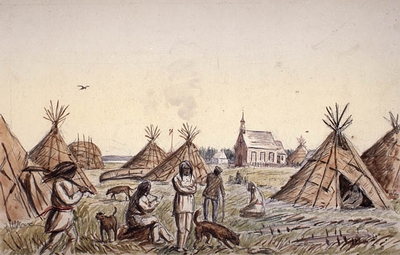St. Ignatius of Loyola spent part of 1523 and 1524 in the Holy Land. He had to leave it sooner than he hoped due to the difficult political situation. After returning from the Holy Land hefound himself in Alcalá. Here he not only gave his spiritual exercises but also explained Christian doctrine. Here he used the expression “Spiritual Exercises” for the first time. During this time he attracted large crowds wherever he went and a few of his listeners became his companions. He and his companions were jailed by the Inquisition for almost two months under suspicion of being Alumbrados, members of movements who claimed direct inspiration of the Holy Spirit. The Inquisition found no errors in what they taught but ordered them not to wear their pilgrims’ robes and not to teach on matters of faith and morals until they had completed their studies. They continued onto Salamanca to study where they were again imprisoned. Their notes were examined, these notes would eventually become The Spiritual Exercises. Again they were acquitted. Ignatius went to Paris to study. During these student days Ignatius gathered a body of mystical men around him who were united by love of Christ and each other. On August 15th 1534 in Paris, Ignatius and his first companions took private vows of poverty and chastity. Due to the pressure of his studies there is discussion among commentators about whether or not his mysticism died somewhat. Certainly it was not a time as rich in divine favors as Manresa or later in Rome. Ignatius says he prayed for shorter periods during his student days but he prayed seven hours a day at Manresa so it is not known what he means by shorter periods. Due to health problems he returned to Spain in April 1535. On June 24th 1537 Ignatius and other companions were ordained though they did not celebrate their First Mass for a long time afterwards. During his time preparing for priesthood he received many spiritual visions and supernatural visitations and deep assurances from God about certain matters. It was similar to what he experienced in Manresa.
Link (here) to read the full homily by Fr. Tommy Lane



































